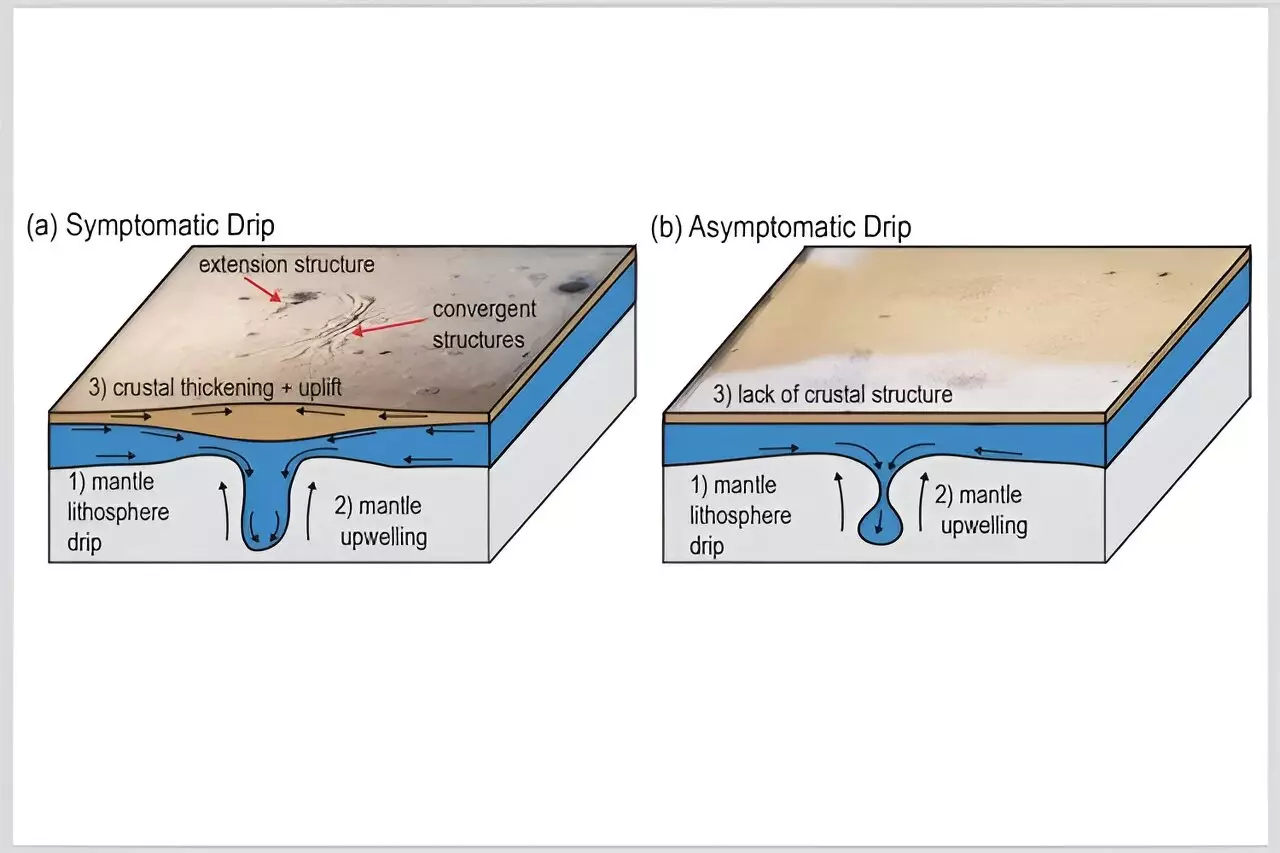Recent research has exposed significant geological developments within Türkiye’s Central Anatolian Plateau, specifically focusing on the enigmatic Konya Basin. Spearheaded by a team of Earth scientists from the University of Toronto, this study employs cutting-edge satellite data and rigorous experimental simulations to illuminate the long-standing mystery of the region’s subsiding landscape. This research provides not only a localized understanding of geological processes but also broader implications for tectonic phenomena on other planets, such as Mars and Venus, which may possess entirely different tectonic characteristics than Earth.
The study, prominently published in *Nature Communications*, identifies a process termed “multi-stage lithospheric dripping” as the driving force behind the basin’s intriguing behavior. This geological convention occurs when denser fragments of the Earth’s rocky crust detach from the surface and descend into the more malleable mantle layer. As a result, the balance of surface landforms changes, producing regions of subsidence as well as mountainous topography. Lead author Julia Andersen articulates the significance of these findings, explaining how observations from satellite data revealed a circular feature indicative of subsidence, raising essential questions about the underlying geological mechanisms at play.
The researchers unearthed a seismic anomaly within the upper mantle and a notably thickened crust, suggesting the presence of high-density materials beneath the surface—a clear indication of lithospheric dripping. This reveals a complex relationship between various geological strata and serves as a stark reminder of how foundational processes shape landforms and landscapes over millennia.
The studies focused on the Konya Basin have strong resonances with prior research conducted on the Arizaro Basin in the Andes. This semblance presents a compelling case for the idea that multi-stage lithospheric dripping could occur worldwide, suggesting that tectonic dynamics are not confined to traditional regions typically studied in geoscience. As the researchers explored the history of the Central Anatolian Plateau, they revealed that it has experienced significant uplift—up to one kilometer—over the past 10 million years. This ongoing evolution underscores the interconnectedness of geological processes in subsiding basins and rising plateaus.
Co-author Russell Pysklywec elaborates on this interrelationship, indicating that the cyclical nature of lithospheric processes gives rise to both subsidence and uplift in undulating landscapes. The findings imply that the initial lithospheric drip can give rise to secondary events of subsidence, illustrating a dynamic geological conversation that unfolds over extended periods. Furthermore, as Andersen highlights, the simultaneous subsidence and uplift of geological features hint at the complexity of Earth’s tectonic systems, complicating our understanding of plate tectonics.
One of the standout elements of this study is its innovative use of laboratory analog models to simulate geological processes. By meticulously constructing models that replicate the conditions of the Earth’s crust and mantle, the researchers could observe the dripping phenomenon in a controlled environment. Their experiments utilized a viscous silicone polymer to mimic Earth’s lower mantle and a specially formulated upper layer to represent the crust.
The methodology devised included inserting a high-density seed into the model, initiating a drip mechanism that mirrored the very processes occurring beneath the Konya Basin. Over the course of 10 hours of experimentation, the researchers directly observed the initial phases of lithospheric dripping and followed the subsequent movement of the secondary drip after 50 hours. The cameras documented critical changes with remarkable detail, allowing the team to analyze the impacts of these drips on surface topography.
One particularly enlightening outcome from these experiments was the observation that even without horizontal movement, the downward force of the secondary drip started to create a basin-like structure in the crust, revealing the nuanced interactions that can occur even under seemingly stable conditions.
The implications of this research extend beyond Earth’s lithosphere; they touch upon the geological frameworks of other celestial bodies, such as Mars and Venus. The existence of plate tectonics, their variation, and potential for similar geological processes on these planets necessitate further investigations, particularly as humanity looks toward exploring these worlds. This research opens up new avenues in comparative planetology and invites similar studies on extraterrestrial environments.
As scientists continue to peel back the layers of our own planet’s mysteries, studies like this one forge a deeper understanding not only of Earth’s geological foundations but also of our place within a broader, dynamic universe. Exploring regions like the Konya Basin may illuminate the past, present, and future of tectonic activity on Earth and beyond, enriching our curiosity to explore the great unknowns that lie within our solar system. Thus, the Konya Basin serves not only as a site of scientific inquiry but also as a beacon for understanding the intricate dance of geological forces that shape worlds.


Leave a Reply